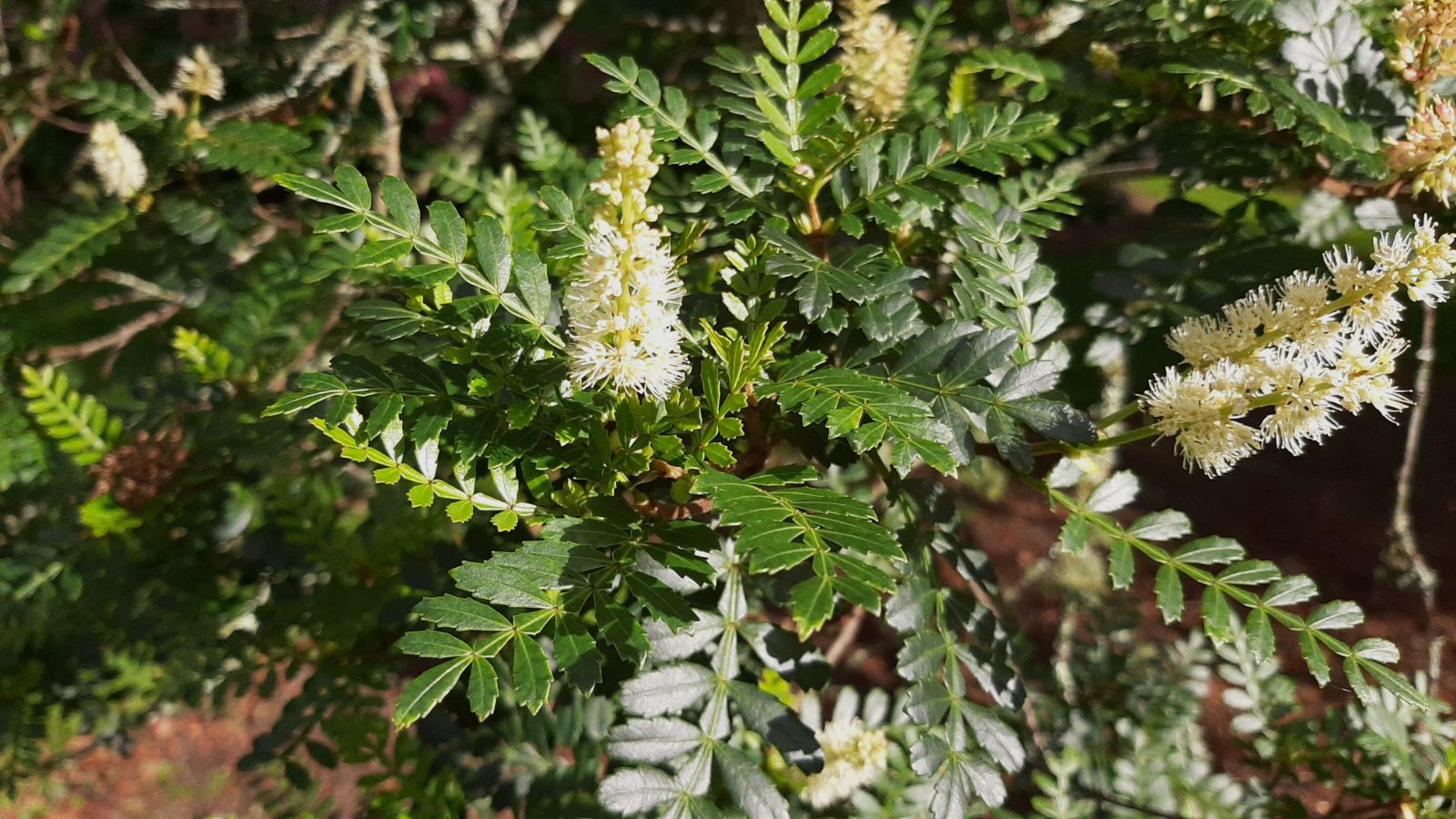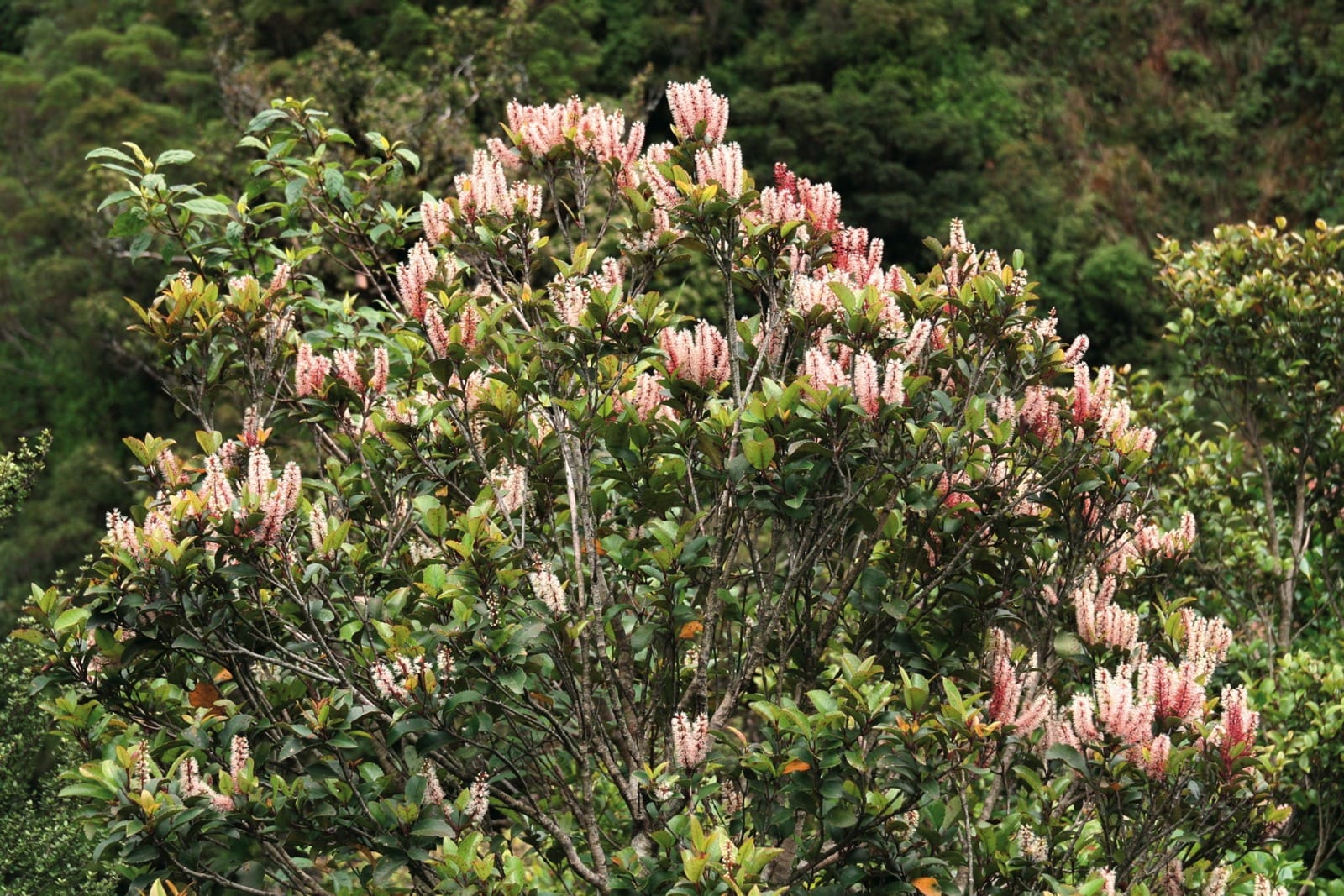Weinmannia
Credits
Article from Bean's Trees and Shrubs Hardy in the British Isles
Article from New Trees by John Grimshaw & Ross Bayton
Recommended citation
'Weinmannia' from the website Trees and Shrubs Online (treesandshrubsonline.
Family
- Cunoniaceae
Weinmannia is the largest genus in the Cunoniaceae, with 150–160 species, ranging from Central and South America to the Indian Ocean (Comores, Madagascar and the Mascarenes), Malesia and the South Pacific (Bradford 1998, Bradford et al. 2004). Most species are found in tropical montane forest, though several occur in the southern temperate zone. Weinmannia are canopy trees, shrubs, or rarely, epiphytes or stranglers. Branches develop from axillary buds, but in some species the apical bud aborts, producing dichotomous branching. The leaves are opposite and decussate, and may be simple or imparipinnate, though the terminal leaflet may be missing. There is great variation in leaf and leaflet size across the genus. The petiole and/or rachis may be winged, and stipules are always present. Flowers are densely clustered along racemes that are grouped into partial inflorescences; rarely, racemes develop directly on the main stem. Partial inflorescences may also be grouped together. The flowers can be hermaphrodite or unisexual and are rather uniform. They are white, cream or pink, 4– or 5-merous, and may be fragrant or not. The capsules are also rather uniform, leathery, dehiscent and with two valves, and the seeds have long hairs (Allan 1961, Bradford 1998, Hopkins 1998a).
Weinmannia is best known in temperate horticulture in the form of W. trichosperma, whose handsome pinnate foliage is a great asset in mild, moist gardens. The milder and moister it is, the better this Chilean species grows; W. racemosa (described below) from New Zealand, by contrast, has not yet been very successful, even in similar conditions. Weinmannia pinnata L., which has a wide range from Mexico to Brazil, is in cultivation at the University of California Botanical Garden at Berkeley, but would probably need protection in winter elsewhere in our area. All Weinmannia species can be propagated from seed or by cuttings.
Bean’s Trees and Shrubs
Weinmannia
A genus of about 150 species of trees and shrubs, mainly tropical and largely confined to the southern hemisphere. Leaves pinnate or trifoliolate. Flowers small, in clusters or racemes. Calyx-lobed and petals four or five, imbricated. Stamens eight to ten. Ovary two-chambered, with two styles. Fruit a leathery capsule, opening by two valves and containing numerous, usually hairy seeds. The genus was named by Linnaeus in honour of J. W. Weinmann (d. 1745), an apothecary of Regensburg (Ratisbon).


